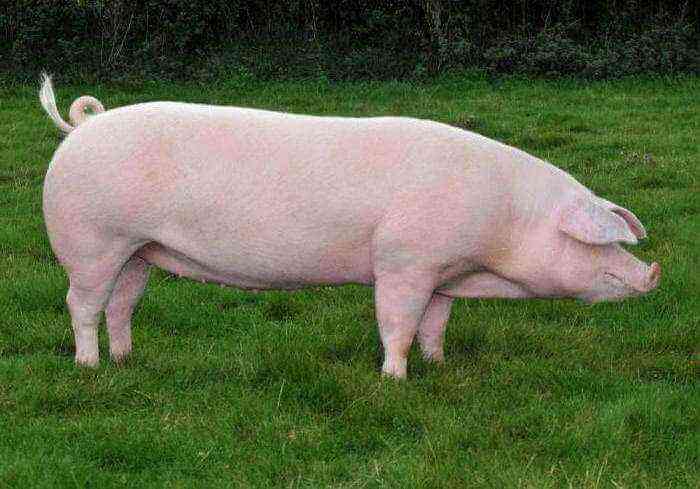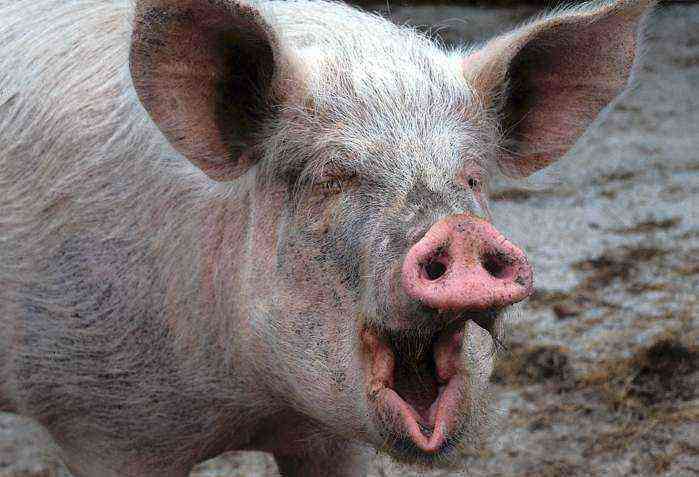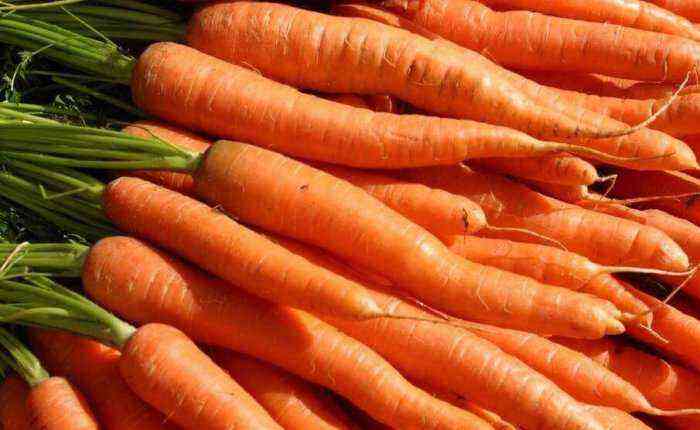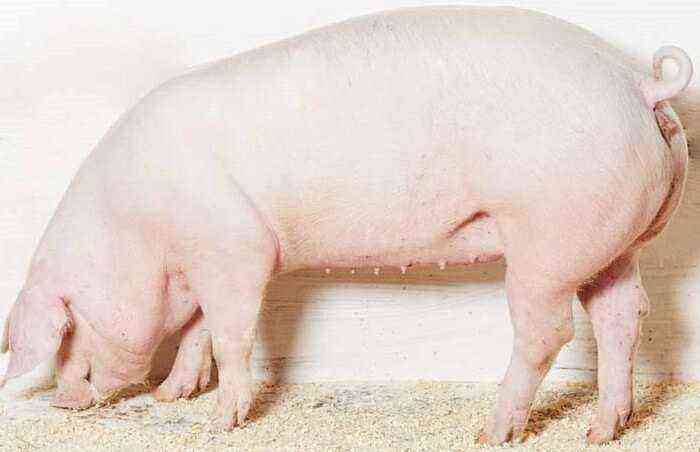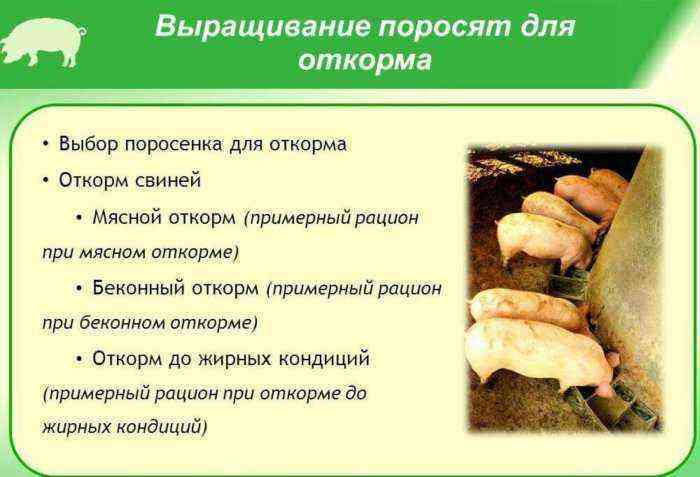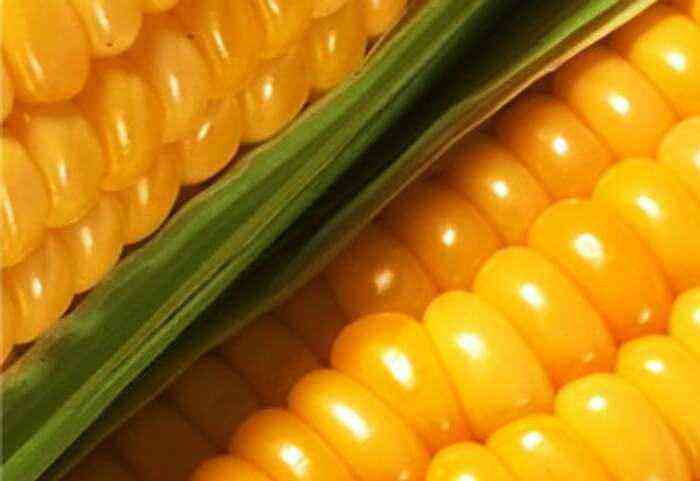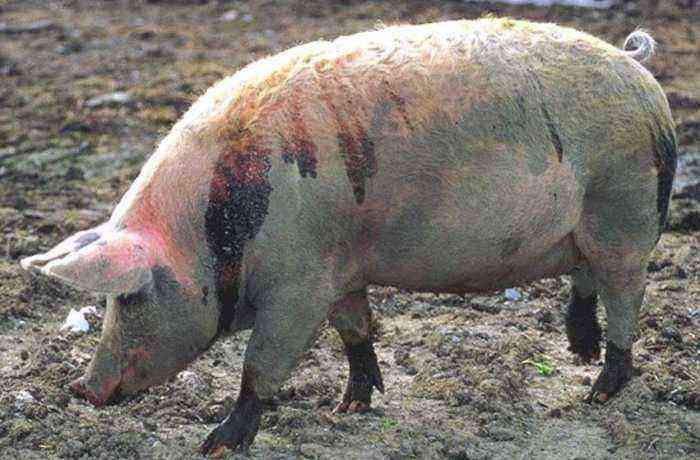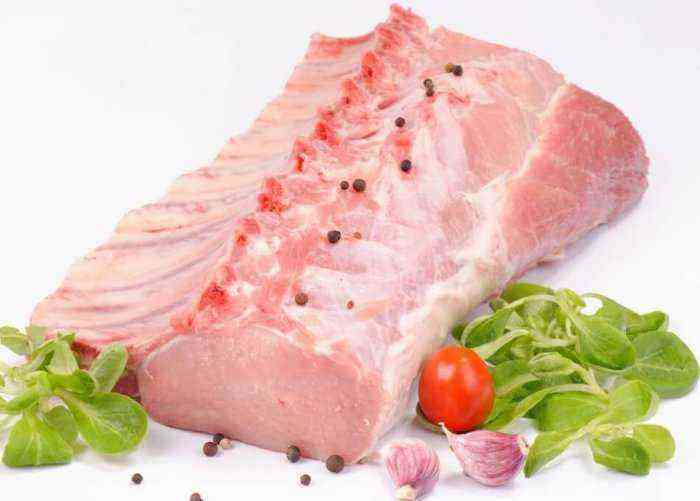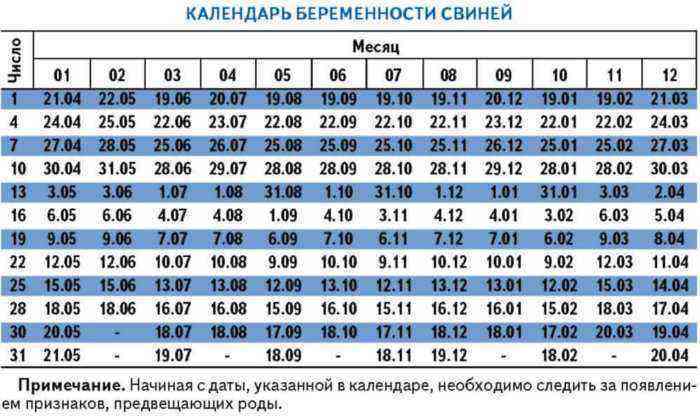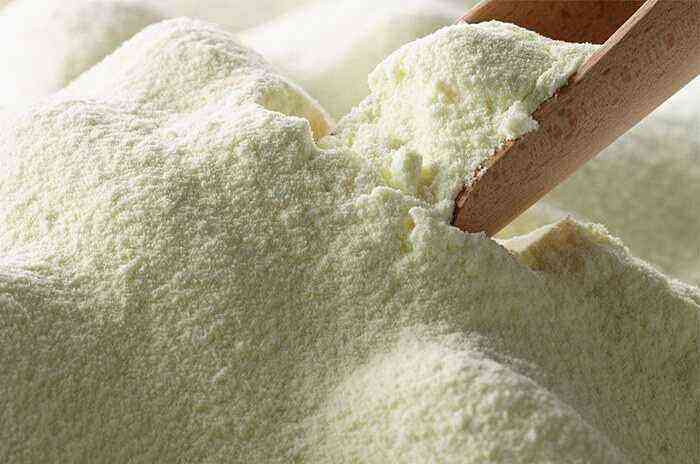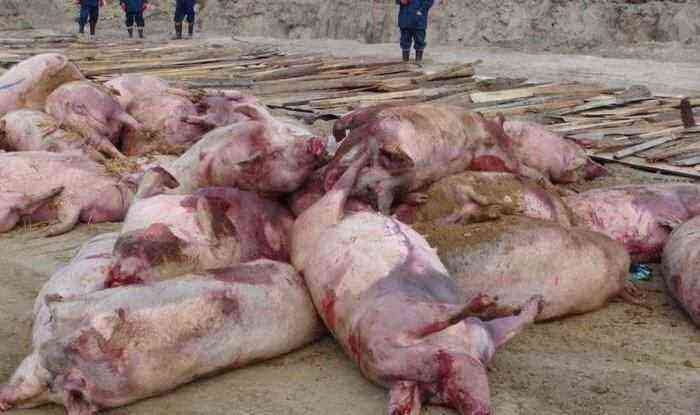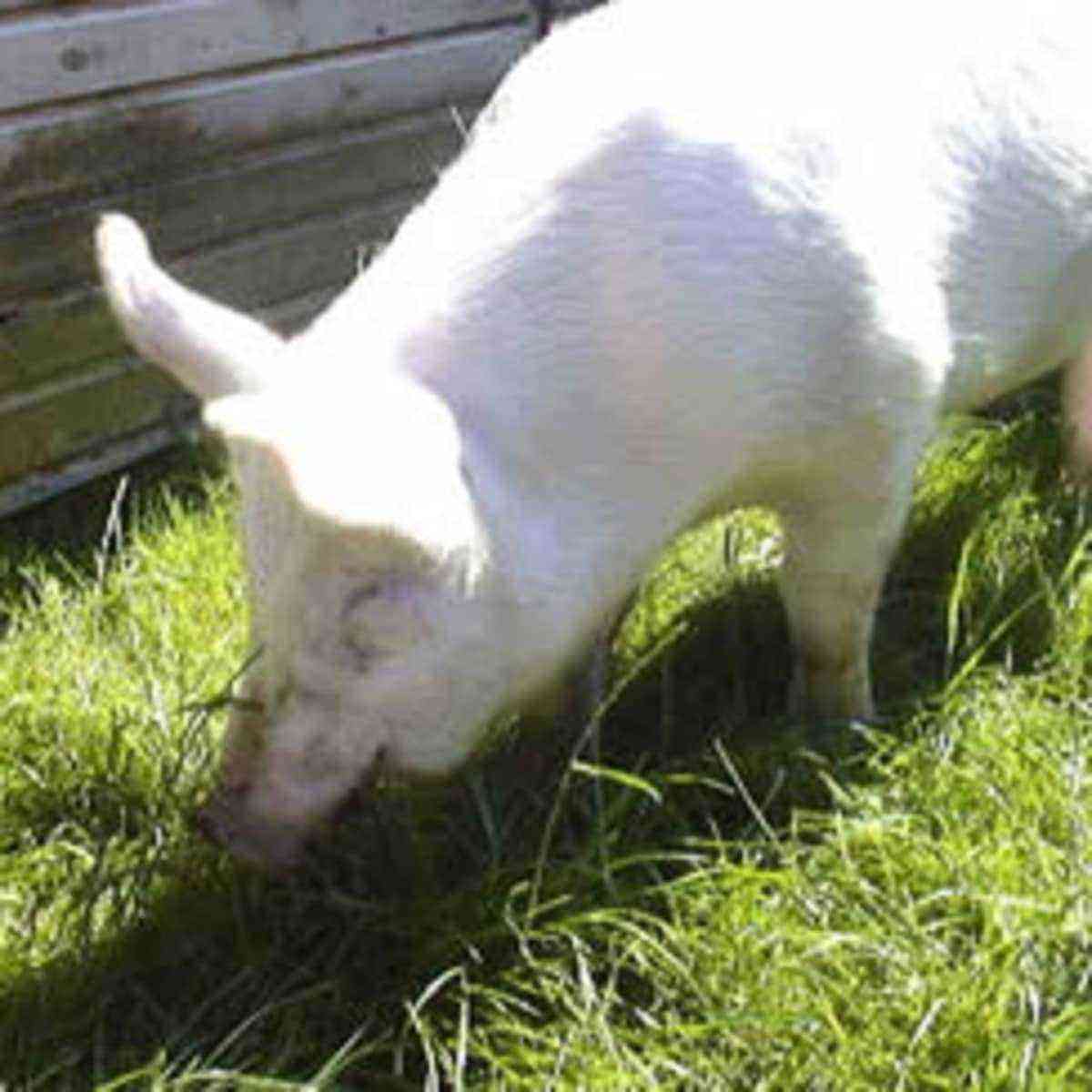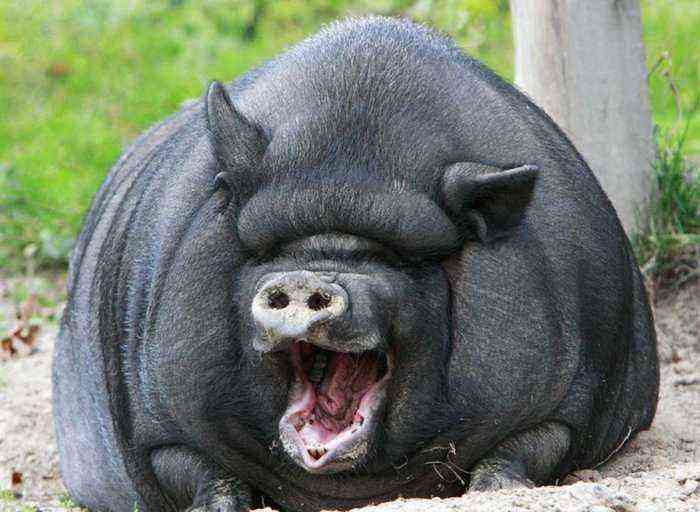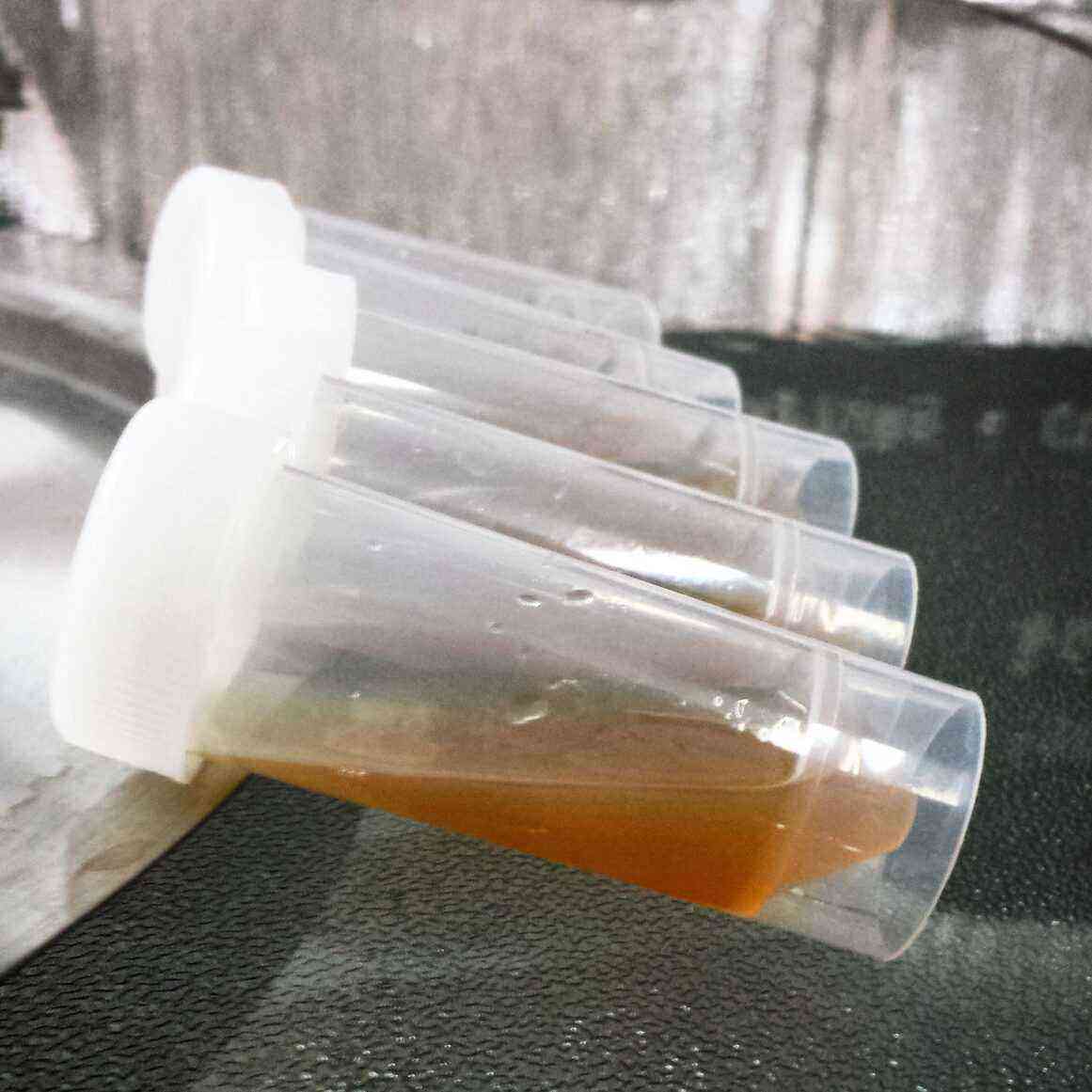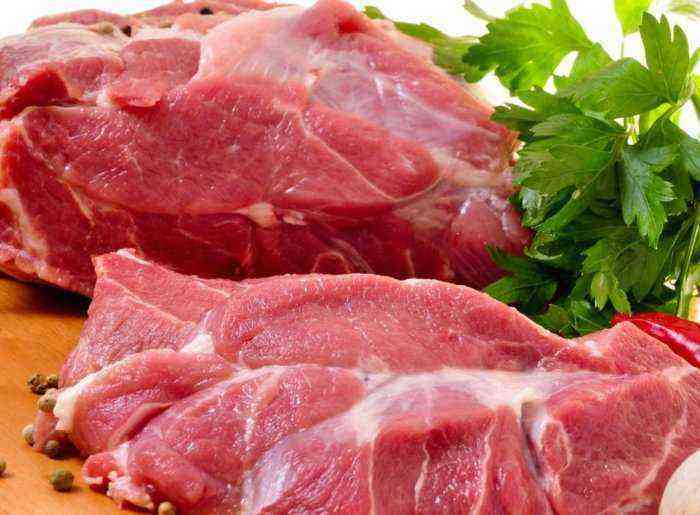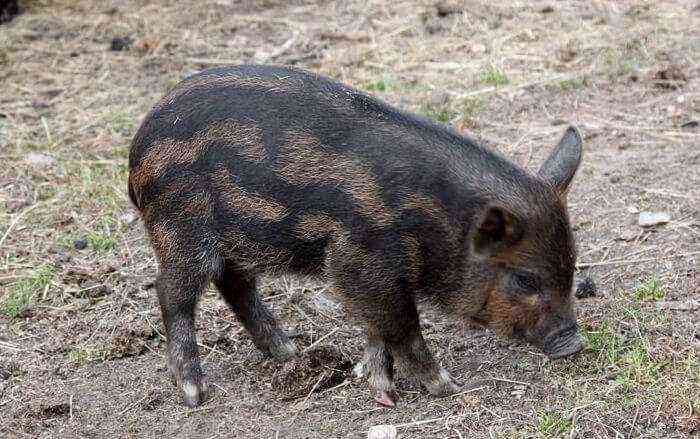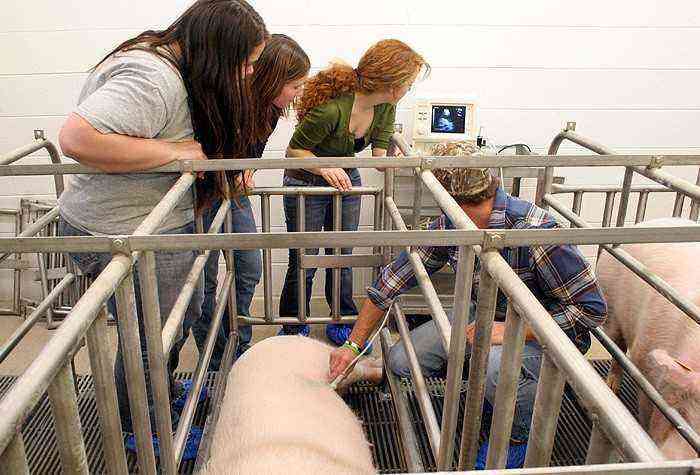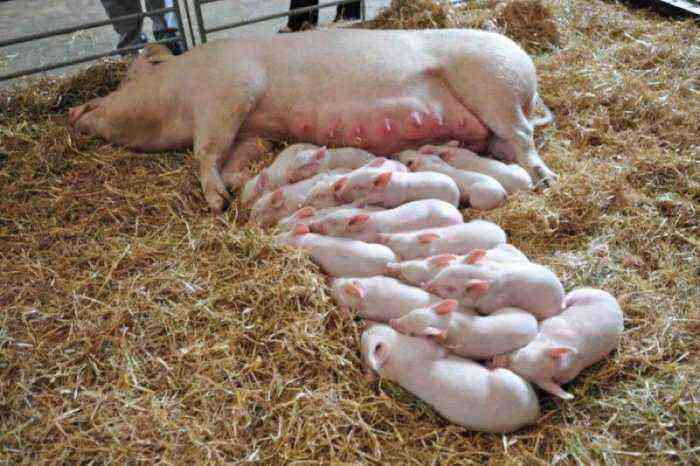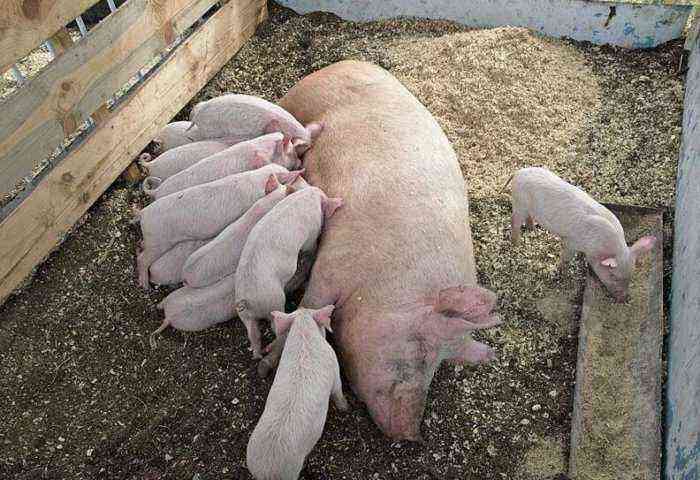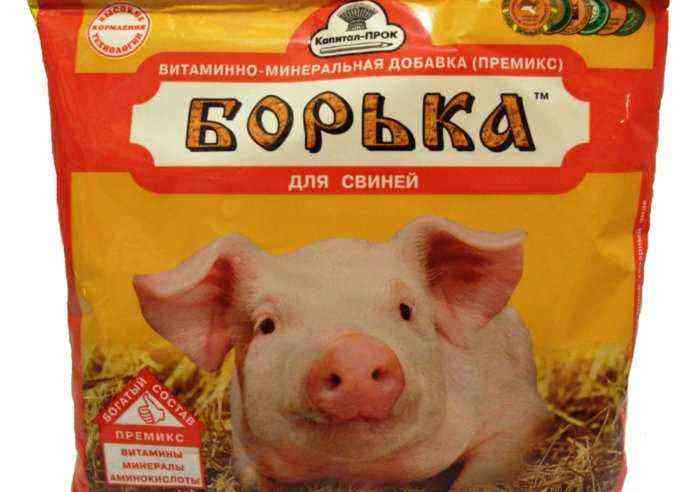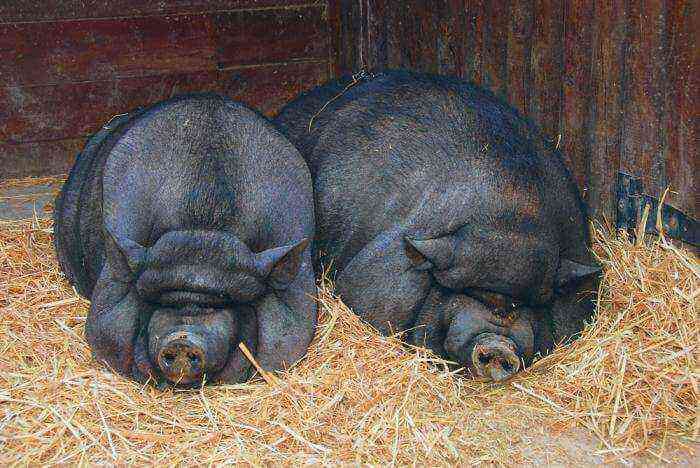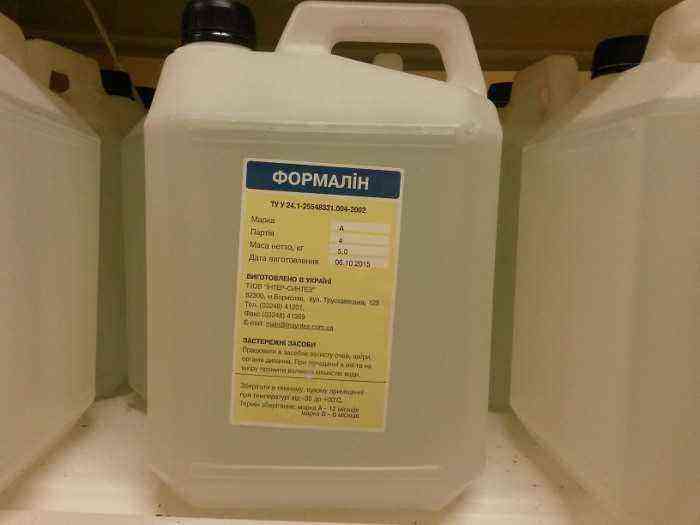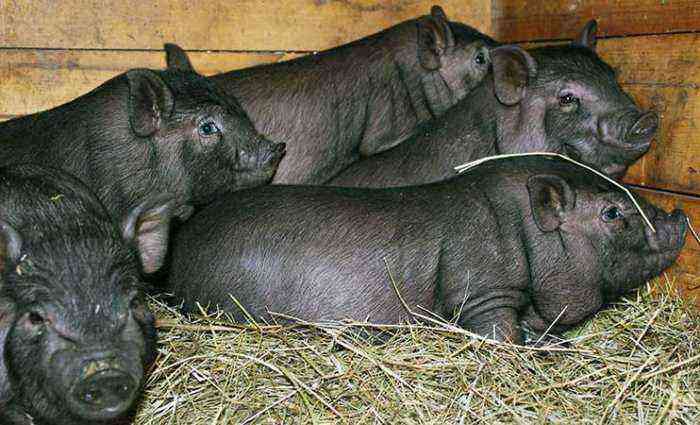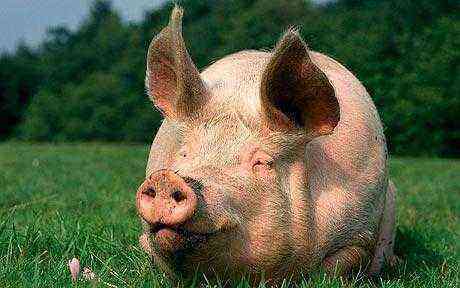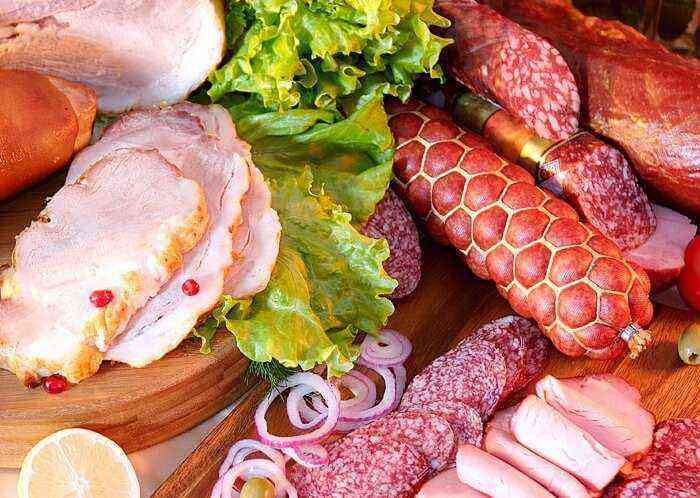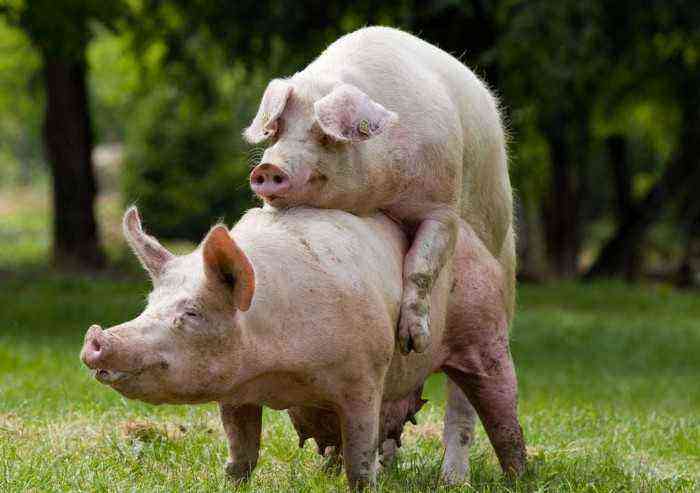In the first few weeks of life, piglets feed on their mother’s milk. Only it is able to provide a growing body with a sufficient amount of nutrients and vitamins. But in some breeds of pigs, the offspring is so large that the sow simply does not have enough nipples for all the babies. In this case, whole milk replacer for piglets is a good alternative to real colostrum. Recently, such a mixture has become increasingly popular among pig farmers from all over the world.
Piglet feed mix
Composition of milk replacer
There are many varieties of whole milk substitutes. Each of them is designed for a specific species, as well as for a specific age group of pets. Accordingly, each of these mixtures implies its own individual composition. But, despite this, the basis of any milk replacer is milk or whey, which are evaporated according to a certain technology to a dry powdery consistency.
The main components of most milk substitutes include:
- Serum.
- Lactose. It effectively reduces the stress of the animal caused by a sudden change in diet. Its largest amount is contained in milk replacer for piglets of the weaning period.
- Amino acids. This category includes lysine, methionine and some other acids, in terms of which the mixture is virtually identical to natural milk.
- A vitamin-mineral complex specially selected for the needs of the age group.
The entire technology for the production of milk replacer is built in such a way that the components included in it retain the maximum amount of useful substances. But due to the minimum amount of moisture (more than 85% evaporates during production), it is much easier to store and transport such mixtures than regular milk.
It is also worth noting that, in addition to the main range of components, substitutes also include additional ingredients. These include:
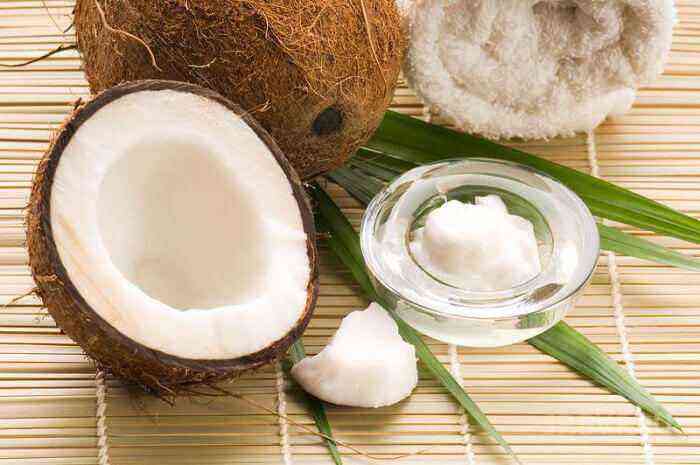
Coconut oil
- Vegetable fats, including coconut and canola oil.
- Various probiotics. Normalize the work of the intestines and the microflora contained in it. Accordingly, nutrients are absorbed much faster, resulting in improved animal growth.
- Additional protein (filler). Most often it is a potato or soy protein. The role of such components is to reduce the cost of the mixture.
Reference. All components included in the certified mixture for feeding piglets are completely natural. It does not contain antibiotics and other harmful substances. The entire composition is perfectly balanced for the needs of the baby.
When are piglets given milk replacers?
It is advisable to use whole milk substitutes on farms in several cases at once. Most often they are used when the sow does not have enough milk to feed the entire offspring. In this case, the use of milk replacer is allowed. But it should be remembered that pig colostrum contains immunoglobulin and a number of important vitamins that are necessary for the full development and growth of babies. Therefore, it cannot be completely replaced with a mixture. The powdered composition in this case acts only as a top dressing.
It is also advantageous to use dry mixes for feeding piglets on mixed farms, where, in addition to pigs, cattle are kept. Many breeders of such farms, in the absence of sufficient milk from the sow, feed piglets with cow’s milk. But, if the farm earns by selling a dairy product, fattening young animals can result in significant economic damage to the enterprise. Therefore, a good alternative to whole cow’s milk is a substitute that is not inferior to it in nutritional value, but is much cheaper.
Often milk replacer is also used during the period of weaning piglets from the mother. The transition to a new type of diet can be quite stressful for the baby, which will further affect his growth. But the use of a substitute allows you to reduce such stress to a minimum. Specially selected components in such a mixture, including lactose, compensate for the lack of milk in the diet and significantly increase the growth rate of young animals.
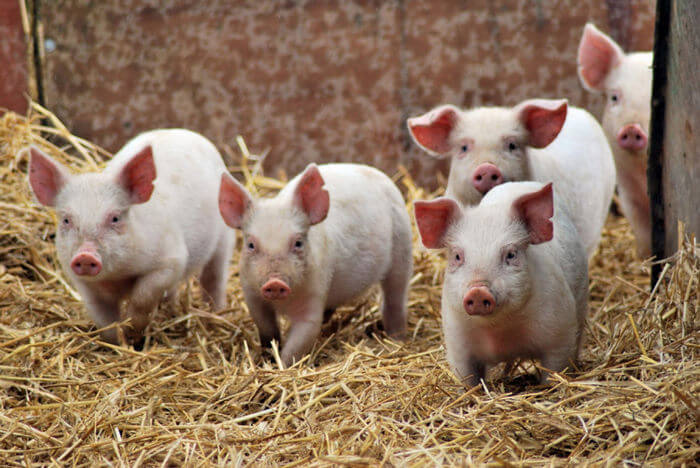
Weaning period for piglets
It is worth noting that for a more adult category of piglets, milk replacer will be a useful addition to the main menu. Nutrients contained in it in large quantities can enhance growth and make meat more tender and tasty. But when used during the fattening period, the mixtures are not diluted with liquid, but mixed with the main feed.
Also in many European countries, farmers store milk substitutes as an operational aid. Such a mixture is stored for a long time, and in order to use it, it is enough to pour the powder with water in the proportion indicated on the package. Use it in the following cases:
- if the sow develops a disease that excludes the possibility of feeding the offspring;
- if the pig died and there are no lactating sows on the farm;
- if the uterus has abruptly stopped lactation.
The use of milk substitutes
All types of milk replacer are quite simple to use. They are produced in the form of a friable powder, which, when feeding, is enough to pour a certain amount of liquid. It is necessary to breed substitutes in accordance with the following algorithm:
- The dry mixture in the required proportion is poured into a capacious dish.
- In parallel, put water on the stove. When the liquid boils, it is allowed to cool to a temperature of 45 degrees.
- Warm water is divided into two parts. The first is poured into the powder and the composition is thoroughly mixed until a homogeneous mass without lumps is formed. The second part is poured next into the resulting mixture.
- When the drink is ready, it is allowed to cool to a temperature of 38-39 degrees, after which it is poured into a convenient dish and the baby is fed.
It is important to pour the mixture with warm water. If you add boiling water to the substitute, most of the nutrients will lose their properties. If you use raw water, it can adversely affect the baby’s digestive system.
Also, substitutes should be diluted with water only before serving to the baby. Such a mixture in a diluted form is quite capable of being stored in the refrigerator for 1-2 days. But the greatest amount of nutrients in it is found fresh.
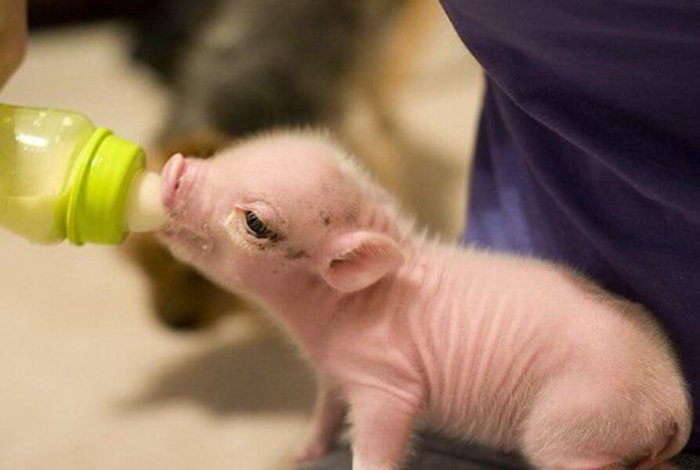
Feeding a pig with a mixture
After the end of the meal, the dishes in which milk replacer was bred and the piglet was fed should be thoroughly washed. In addition, before each new use, it must be doused with boiling water or disinfected in any other way.
And of course, when using milk replacers, it is important to observe the correct dosage and concentration of the mixture for a specific age group of animals.
For suckling piglets
Colostrum is the main food for a newborn piglet. Moreover, it is important to ensure that the young animals receive a portion of such a product within the first 1-1,5 hours. This will contribute to the faster formation of the immune system and enhance the growth of the baby.
In general, a newborn piglet consumes no more than 30 g of colostrum at one time. But, if there are a lot of babies or lactation is weak, young animals can get only half the norm and remain hungry. Therefore, in such situations, it is necessary to use milk replacer from the first day of the piglet’s life.
The mixture is diluted with liquid in a ratio of 1 to 7. If the lack of milk is not so great, then the powder can be diluted more economically, based on a ratio of 1 to 8. Young animals are fed according to age:
- The first 4 days, feeding is carried out at least 6 times a day. In this case, the daily norm of a diluted substitute for a baby is from 120 to 20 ml (depending on weight).
- In the next 5-10 days, the number of meals is reduced to 5. But the daily amount of feeding increases to 300-500 ml.
- Starting from 11 and up to 20 days, feeding is also carried out 4 times a day. The volume of the mixture is 500-800 ml. But during this period, it is already necessary to slowly introduce concentrated food into the diet in the amount of 25-50 g.
- For the next 10 days, the concentrate rate gradually increases to 200 g and the menu also includes 50 g of greens. The volume of the fed substitute is increased to 1000 ml. The baby is fed 4 times a day.
- At the age of 31-40 days, the piglet is fed 4 times a day. The menu includes 1 liter of milk replacer, 400 g of mixed fodder, 100 g of grass or other green fodder.
It should be noted that substitutes for feeding piglets in the lactation period are used only as top dressing. Especially in the first 2 days of life, they should be fed to the baby only after he has consumed a portion of sow colostrum.
Also an important point is the correct choice of milk replacer. Each mixture is compiled on the basis of the physiological needs of an animal of a certain age. So, for babies up to 10 days, a composition with a fat content of not more than 12% is needed. In the next 5 days, it must be replaced with a 20% mixture. Starting from the 16th day of a piglet’s life, it is fed with a substitute with a fat content of not more than 16%.
Gradually reduce the rate of milk powder in the diet of a piglet when it reaches the age of 1,5 months. At the same time, he is transferred to 3 meals a day. A repeated increase in the portion of the substitute is carried out only when the baby is weaned from the mother. By that time, the piglets are usually already 2 months old.
For artificially fed piglets
Completely different nuances should be considered when feeding formula-fed babies with a dry mixture. Such young animals require much more care and attention.
In this case, the mixture is the basis of the baby’s diet. Therefore, it is necessary to water piglets with a more concentrated substance. The ratio of dry powder to water is 1:5. It should also be taken into account that in the first 3 days of life, young animals eat minimal amounts of colostrum, but not less than 20 times a day. Therefore, in order to maintain the optimal pace of development of the baby, you will have to feed him with a mixture with the same frequency. Moreover, part of the meals necessarily falls at night.
It is extremely important to observe the correct dosage of the substitute during feeding. At one meal, a newborn piglet should eat no more than 40 g of drink. If this rate is exceeded, the baby may develop diarrhea or constipation, which can significantly affect his health and even lead to the death of the animal.
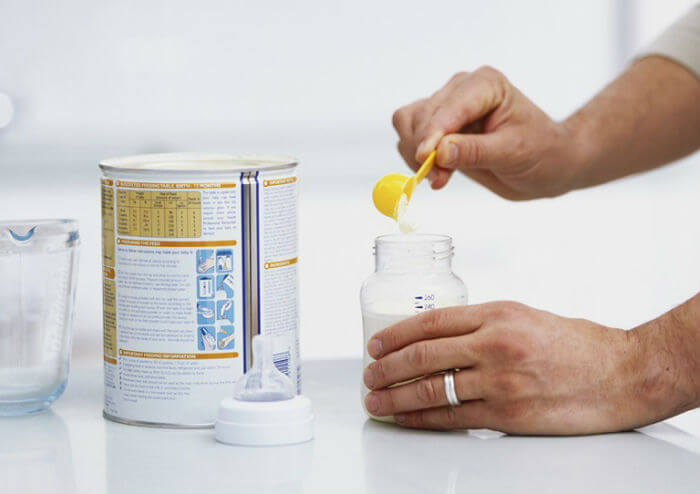
Dilution of the mixture
The powder should be diluted with boiled water and only before serving. Before feeding the newborn, the mixture is heated to a temperature of 37-40 degrees.
Many breeders successfully practice the early training of artificially fed young animals to self-feeding. To do this, already on the 4th day, the drink is poured not into a bottle with a nipple, but into a saucer specially allocated to the pig. In order for the cub to learn to drink from unusual dishes, at first some effort may be required on the part of the person. But, as a rule, in 3-4 days he is fully mastered and drinks top dressing on his own.
An independent meal by a piglet should not exceed 15 minutes. Otherwise, there is a risk that he will overeat. If the animal has not eaten all the prepared food, then it is better to throw away the remains, and thoroughly wash the dishes, disinfect and prepare for the next meal.
Starting from 4 days of age, solid feeding can also be gradually included in the diet of young animals. Roasted barley is an example of such top dressing. This delicacy has a strong aroma, which causes appetite in young animals.
Attention! The frequency of feeding piglets is reduced gradually. Night meals can be completely removed from the routine only from 10 days after the birth of babies.
Whole milk replacer can significantly increase daily weight gain and improve the health of young animals. In addition, such a mixture is the most optimal replacement for sow colostrum if the farrowing pig cannot feed the offspring on its own. But when feeding animals with milk replacer, it is important to carefully approach the issue of choosing and the correct dosage of such top dressing. Otherwise, it will not have any effect on the young.

